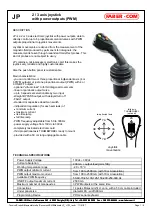
EB 5573 EN
91
System-wide functions
8.7
On/off control
The flow temperature can be controlled, for example by activating and deactivating a boiler.
The controller switches on the boiler when the flow temperature falls below the set point by
T = 0.5 x 'Hysteresis'. When the set point is exceeded by T = 0.5 x 'Hysteresis', the boiler is
switched off again. The greater the value you choose for 'Hysteresis', the less frequent switch-
ing on and off will be. By setting the 'Minimum ON time', an activated boiler remains
switched on during this period regardless of the flow temperature fluctuations. Similarly, a
deactivated boiler will remain switched off regardless of the flow temperature fluctuations if
the Min. OFF time has been specified.
Functions
WE
Configuration
Control mode
1
5.0 °C
2 min
2 min
CO1, 2, 4 > F12 - 0
Hysteresis: 1.0 to 30.0 °C
Min. ON time: 0 to 10 min
Min. OFF time: 0 to 10 min
8.8
Continuous control in control circuit HC1
The flow temperature in the control circuit HC1 can be controlled using a PID algorithm. The
valve in HC1 control circuit receives an analog 0 to 10 V signal from the controller. When a
system deviation occurs, 'Proportional-action coefficient KP' immediately causes the 0 to
10 V signal to change (the greater the KP, the greater the change). The integral component
becomes effective with time: 'Reset time Tn' represents the time which elapses until the inte-
gral component has changed the output signal to the same extent as the immediate change
performed by the proportional component (the greater Tn is, the slower the rate of change
will be). Due to the derivative component, any change of the system deviation is incorporat-
ed into the output signal with a certain gain (the greater 'Derivative-action time TV' is, the
stronger the change will be).
Functions
WE
Configuration
Control mode
1
2.0
120 s
0 s
35 s
CO1 > F12 - 1
KP (gain): 0.1 to 50.0
Tn (reset time): 1 to 999 s
TV (derivative-action time): 0 to 999 s
TY (valve transit time): 15, … , 240 s















































